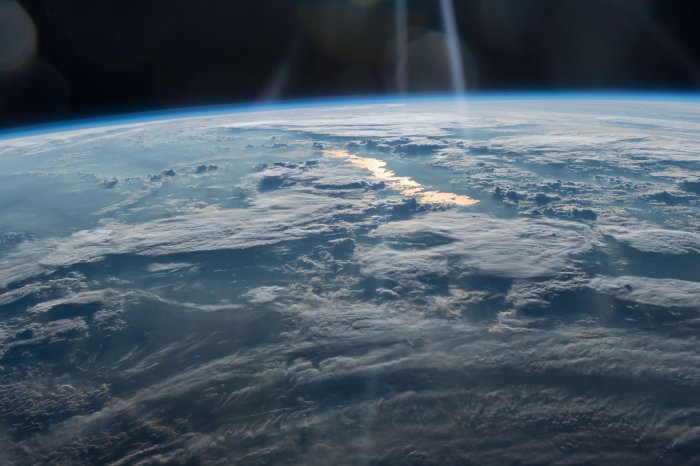Updated: June 16, 2016 at 10:18 AM
2016: The Year in Space (20 images)
Out of this world is what this selection of space-related images from 2016 are. From Curiosity selfies to zinnia flowers grown in space and SpaceX successfully landing its Falcon 9 rocket on a drone ship at sea, this year's imagery is stellar.

This stunning image of Earth was taken by a member of the Expedition 47 crew aboard the International Space Station (ISS) on May 31, 2016. The view stretches from northwestern China on the bottom into eastern Kazakhstan. The large lake in Kazakhstan with the golden sun glint is the crescent-shaped Lake Balkhash, the second largest like in Central Asia. NASA/UPI
License photo | Permalink

This image shows our neighboring planet Mars, as it was observed shortly before opposition in 2016 by the NASA/ESA Hubble Space Telescope. Some prominent features of the planet are clearly visible: the ancient and inactive shield volcano Syrtis Major; the bright and oval Hellas Planitia basin; the heavily eroded Arabia Terra in the centre of the image; the dark features of Sinus Sabaeous and Sinus Meridiani along the equator; and the small southern polar cap. NASA/UPI
License photo | Permalink

CubeSats fly free after leaving the NanoRacks CubeSat Deployer on the International Space Station on May 17, 2016. Seen here are two Dove satellites, part of a constellation designed, built and operated by Planet Labs Inc. to take images of Earth from space. The images have several humanitarian and environmental applications, from monitoring deforestation and urbanization to improving natural disaster relief and agricultural yields in developing nations. CubeSats are a new, low-cost tool designed to take narrowly targeted scientific observations, with only a few instruments, often built from off-the-shelf components. NASA/UPI
License photo | Permalink

Situated 8,000 light-years away in the constellation Vulpecula - Latin for "little fox" - the region in the image is known as Vulpecula OB1. It is a "stellar association" in which a batch of truly giant "OB" stars is being born. O and B stars are the largest stars that can form. This image, released on May 23, 2016, was obtained as part of Herchel's Hi-GAL key-project using the infrared space observatory's instruments to image the entire galactic plane in five different infrared wavelengths. Photo by ESA/NASA/UPI
License photo | Permalink
Advertisement